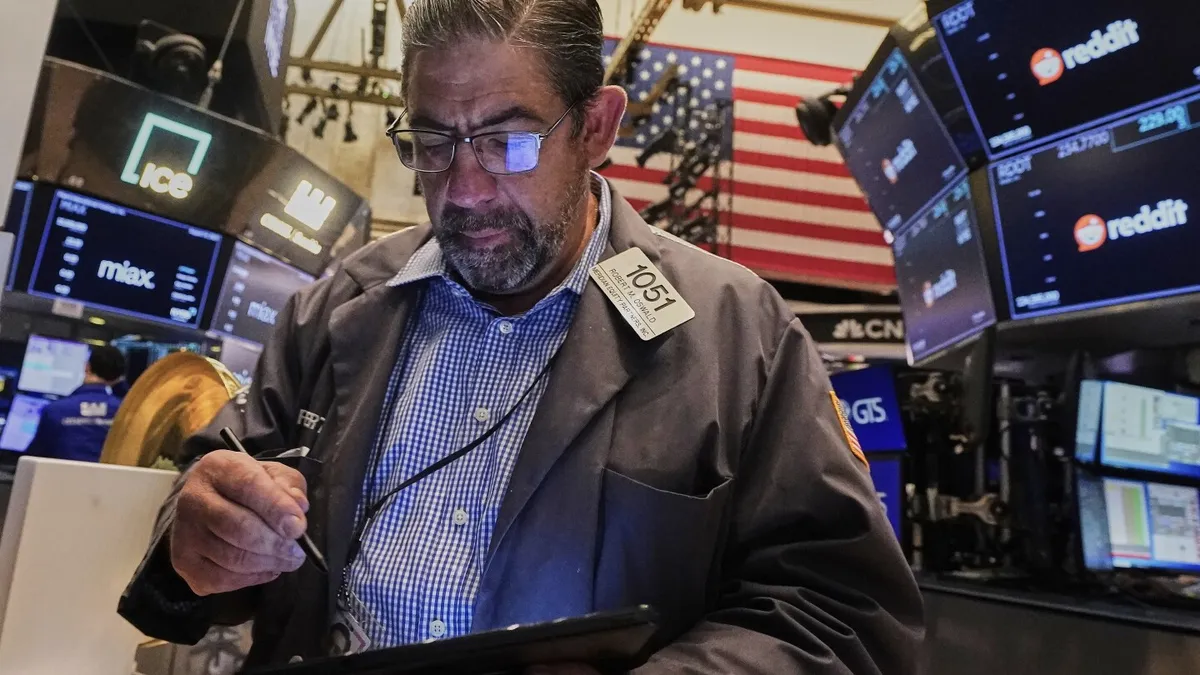
On Thursday, Wall Street saw most stocks decline following a disappointing inflation report that revealed inflation at the U.S. wholesale level exceeded economists' expectations. Despite the overall downturn, gains from major tech companies, particularly Amazon, helped to cushion the losses. According to recent data, seven out of ten stocks within the S&P 500 index fell, but the index still managed to edge up by less than 0.1%, reaching yet another all-time high.
The Dow Jones Industrial Average dipped by 11 points, reflecting a decline of less than 0.1%, while the Nasdaq composite also saw a minor drop of less than 0.1% from its previous record. The inflation report indicated that wholesale prices rose by 3.3% last month compared to the same period last year, significantly above the anticipated 2.5% rate. This unexpected spike in wholesale prices could signal higher inflation for U.S. consumers in the near future, raising concerns among traders.
The inflation data prompted traders to reconsider their expectations regarding the Federal Reserve's interest rate strategy. Initially, there was widespread consensus that the Fed would cut interest rates during its next meeting in September. However, the latest figures have introduced uncertainties about this prospect. Chris Larkin, managing director of trading and investing at E-Trade from Morgan Stanley, stated, “This doesn’t slam the door on a September rate cut, but it may raise some doubt.” Current data from the CME Group now indicates a 7.4% chance that the Fed may hold rates steady in September, compared to a previous 100% certainty of a cut.
Higher interest rates typically place a burden on companies by increasing borrowing costs. This situation is particularly challenging for smaller businesses that often rely on loans for growth. The Russell 2000 index, which tracks smaller U.S. stocks, fell by a market-leading 1.2%. This decline underscores the broader impact of rising rates on the market.
Amidst the disappointing inflation data, a separate report indicated that fewer U.S. workers applied for unemployment benefits last week, a positive sign indicating low layoff rates in a challenging job market. However, a robust job market could diminish the Fed's motivation to reduce interest rates in the near term, further complicating the economic outlook.
The mixed economic data influenced Treasury yields in the bond market, with the yield on the 10-year Treasury rising to 4.28% from 4.20% before the report's release. This increase reflects investor concerns about future inflation and interest rate changes.
On the corporate front, Tapestry, the parent company of Coach and Kate Spade New York, experienced a significant stock drop of 15.7% following its announcement of potential profit losses due to tariffs, despite reporting a stronger profit than expected for the latest quarter. Similarly, Deere saw its stock fall by 6.8% after it reduced its profit outlook, even though it reported better-than-expected earnings.
On a brighter note, Fossil Group surged by 29.8% after reporting profits exceeding analysts' forecasts and announcing plans to enhance its financial position.
Big Tech stocks, particularly Amazon, played a crucial role in offsetting Wall Street's losses. Amazon's stock rose by 2.9%, buoyed by its announcement of same-day delivery for fresh groceries across more than 1,000 cities. Given Amazon's substantial market capitalization of $2.45 trillion, its stock movements significantly impact the S&P 500 compared to smaller companies.
Overall, the S&P 500 increased by 1.96 points to close at 6,468.54, while the Dow Jones Industrial Average fell by 11.01 points to 44,911.26, and the Nasdaq composite decreased by 2.47 points to 21,710.67. Internationally, stock indexes across Asia and Europe displayed mixed performance as markets braced for an upcoming meeting between U.S. President Donald Trump and Russian President Vladimir Putin.
In summary, Wall Street's performance on Thursday reflected a complex interplay of economic indicators, corporate earnings, and the potential future actions of the Federal Reserve, setting the stage for ongoing market volatility.